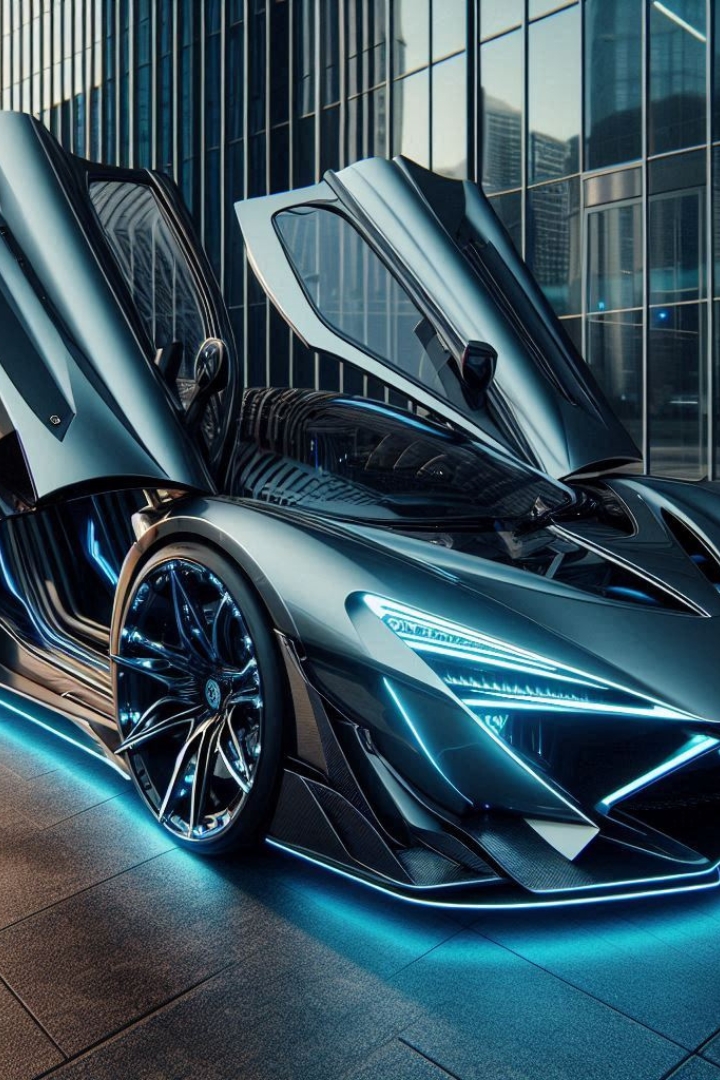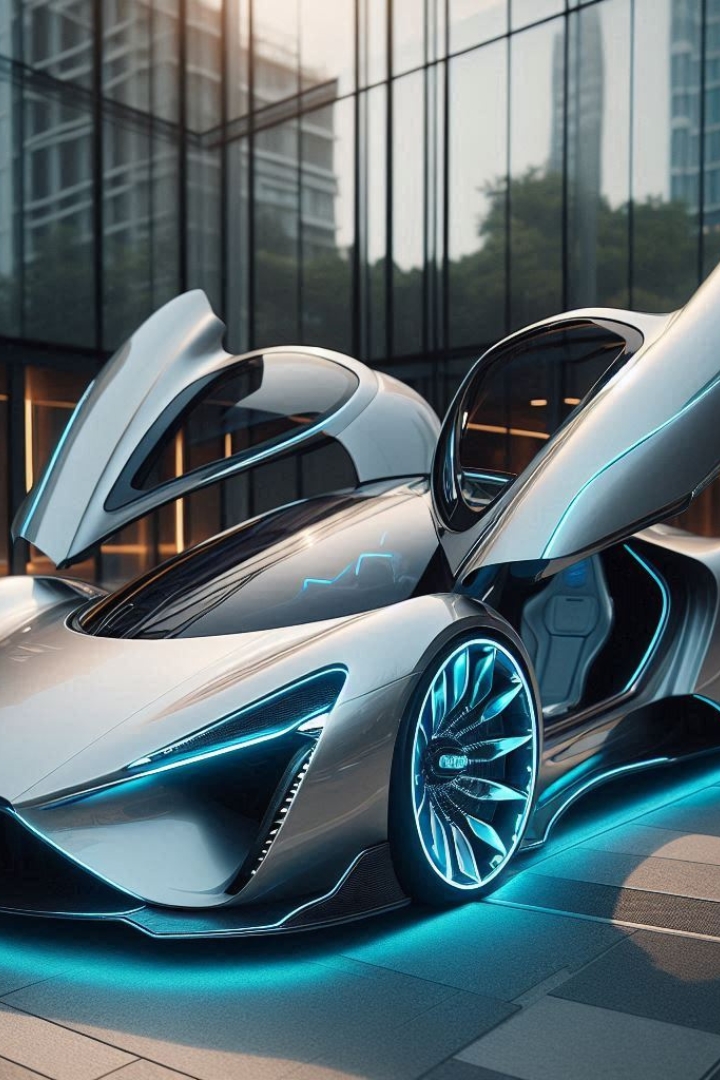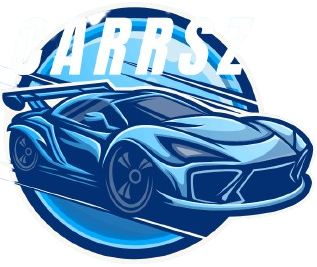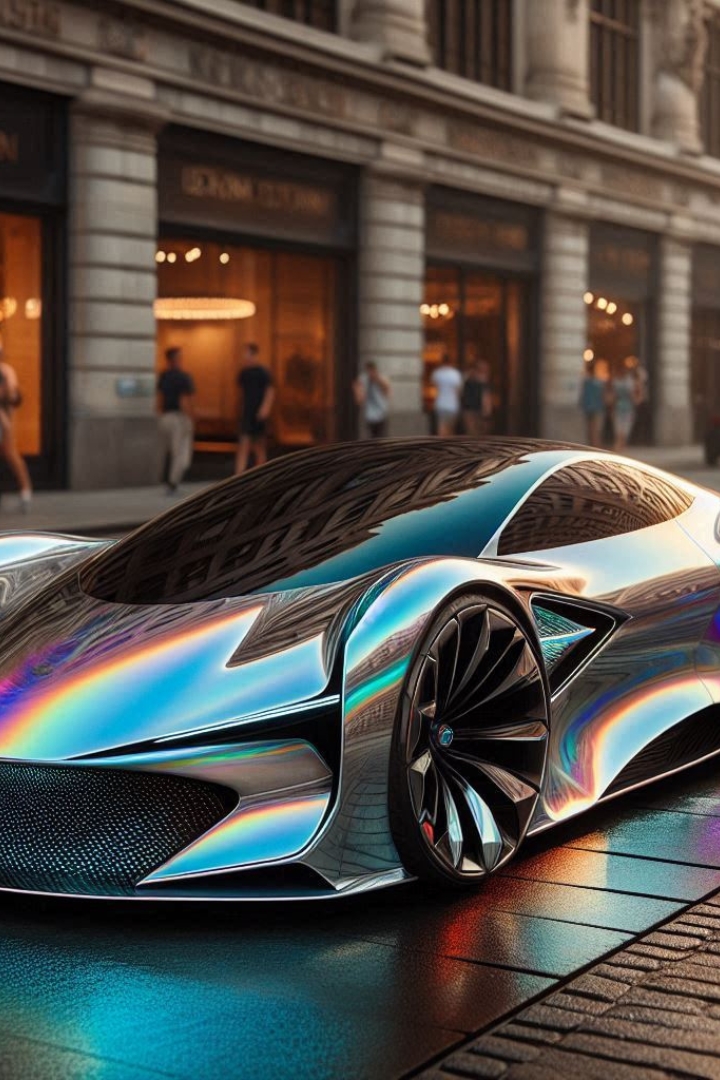Introduction
Supercar address the zenith of auto designing, exemplifying a definitive combination of speed, plan, and development. These superior exhibition vehicles are not simply about getting from point A to point B; they are tied in with encountering the excitement of driving in its most perfect structure. With their smooth plans, state of the art innovation, and rankling speed increase, supercar push the limits of what is conceivable out and about.
The Evolution of Supercars
Early Foundations
were laid fundamentally sooner. During the 20th hundred years, vehicles like the 1914 Vauxhall 25-hp ‘Displaying‘ suggested what could become supercars with their extraordinary presentation for the time. The mid-20th century saw the ascent of renowned models, for instance, the Ferrari 250 GTO and the Jaguar E-Type, which merged speed, plan, and pattern setting development in habits that foreshadowed the supercars of today.
The Rise of Modern Supercars
The Contac’s precise plan and scissor entryways became significant of the supercar period, while the 308 GTB displayed Ferrari’s ability in joining execution with creative plan. These vehicles set new benchmarks in speed and designing, with the McLaren F1 holding the title of the world’s quickest vehicle for a long time.
Defining Characteristics of Supercars
Exceptional Performance
At the core of each supercar is its exhibition. Supercar are designed to accomplish uncommon speed, speed increase, and taking care of.
Advanced Technology
Supercars are the embodiment of mechanical development in the car world. Their cutting edge innovation improves execution as well as alters driving encounters. Here is a more intensive glance at the state of the art innovations that make supercars unprecedented:
**1. Elite Execution Motors
At the core of each supercar is an elite presentation motor, frequently highlighting progressed designing strategies. Numerous supercars are outfitted with turbocharged or mixture powertrains that convey remarkable drive and force. For example, the Porsche 918 Spyder joins a 4.6-liter V8 motor with electric engines, accomplishing north of 875 pull and offering great speed increase.
**2. Lightweight Materials
Supercars habitually utilize progressed materials like carbon fiber, titanium, and magnesium to decrease weight and further develop strength. Carbon fiber, specifically, is known for its high solidarity to-weight proportion and is utilized broadly in the development of supercar skeleton, body boards, and inside parts. This decrease in weight improves speed increase and taking care of as well as adds to eco-friendliness and generally speaking execution.
Aerodynamics
.Streamlined features assumes a significant part in the plan of supercars. Highlights like dynamic spoilers and diffusers oversee wind current to upgrade execution and steadiness. The McLaren P1, for instance, incorporates a functioning back spoiler that changes its point in light of speed and driving circumstances, upgrading streamlined proficiency.
2. Lightweight Materials
To further develop execution, supercar frequently utilize lightweight materials like carbon fiber and aluminum. These materials assist with lessening the vehicle’s general weight, which upgrades speed increase and taking care of. The Ferrari 488 Pisa uses carbon fiber parts to decrease weight and increment execution.
3. Half and half and Electric Drivetrains
Half and half and electric drivetrains address a huge headway in supercar innovation. Half and half frameworks consolidate gas powered motors with electric engines to support execution while further developing eco-friendliness. The Rima Cato, an all-electric supercar, embodies this pattern with its great power and reach, offering a brief look into the eventual fate of elite execution electric vehicles.
4. High level Driver Help Frameworks
Present day supercar integrate progressed driver help frameworks (ADAS) to improve wellbeing and driving elements. These frameworks incorporate elements like versatile journey control, path keeping help, and programmed crisis slowing down. The Aston Martin DBS Superleggera, for instance, comes furnished with a scope of ADAS includes that supplement its superior exhibition capacities.
. Lightweight Construction
Reducing weight is a fundamental technique for updating supercar execution. Makers utilize lightweight materials and headway techniques to accomplish this:
Carbon Fiber: Carbon fiber is a common material in supercar because of its high determination to-weight degree. It is utilized in body sheets, frame parts, and inside parts. The Lamborghini Aventador, for instance, includes wide use of carbon fiber to diminish weight and further cultivate determination.
Aluminum Mixes: Aluminum blends are besides utilized in supercar headway to save weight while remaining mindful of fortitude. The Porsche 918 Spyder uses aluminum by and large in its body and suspension parts.
Magnesium and Titanium: Some supercar use magnesium and titanium for express parts to reduce weight besides. These materials are customarily found in wheels, motor parts, and suspension parts.
Cutting-Edge Driver Assistance Systems
Supercar coordinate advanced driver help systems (ADAS) to further develop security and driving components. These structures include:
• Flexible Journey Control: Adaptable excursion control keeps a set speed while normally changing the partition from the vehicle ahead. The Mercedes-AMG GT Dull Series incorporates this system to overhaul driving comfort on extended outings.
• Way Keeping Help: Way keeping assist helps drivers with staying inside their way by giving directing data sources or cautions. The Aston Martin DBS Superleggera integrates way keeping help as a part of its security suite.
• Customized Emergency Dialing back: Modified emergency halting instruments recognize potential crashes and apply the brakes to hinder or ease impact. The Porsche 911 Super S is furnished with modified emergency dialing back to overhaul prosperity.
The Future of Supercars
The future of supercar is ready to be formed by progressing headways in innovation and advancing car patterns. Key improvements include:
• Expanded Jolt: As ecological guidelines become more rigid, supercar producers are progressively putting resources into electric and half and half advancements. Future supercars will probably highlight considerably further developed electric drivetrains and energy recuperation frameworks.
• Independent Driving: While independent driving innovation is still in its beginning phases, it is normal to impact the advancement of supercars. Future supercars may consolidate semi-independent highlights to upgrade wellbeing and comfort

Supercars in Motorsport: A Legacy of Performance
Supercar have changed the road as well as expected an enormous part in motorsport, filling in as both testbeds for development and pictures of running heritage.
1. Supercar Running Series
Supercar running series have transformed into a huge piece of the motorsport scene, showing the show and improvement of best in class sports vehicles. Key swank series include:
• Recipe 1: While not expressly a supercar series, Condition 1 has seriously influenced supercar development. Various degrees of progress seen in F1, for instance, undeniable level smoothed out highlights and cross variety powertrains, have been taken on in supercars. For instance, the development made in Condition 1 has impacted the arrangement and execution of the Ferrari LaFerrari and the McLaren P1.
• Le Screens Series: The 24 Hours of Le Screens, a regarded tirelessness race, has seen interest from various supercar producers. Vehicles like the Audi R18 and the Toyota TS050 have shown best in class advancement and determination, reflecting the planning skill of their makers.
• Supercar Title: Various districts have given supercar hustling series, similar to the Supercars Title in Australia. These series feature modified variations of creation supercar and display the show and robustness of these vehicles in forceful circumstances.
Technology Transfer
Motorsport has always been a testing ground for new technologies, many of which find their way into consumer supercars:
- Hybrid Powertrains
- The hybrid technology used in racing, such as KERS (Kinetic Energy Recovery System) in Formula 1, has influenced hybrid supercar like the Porsche 918 Spyder and the Ferrari SF90 Straddle. These systems enhance performance and efficiency by recovering energy during braking and deploying it for acceleration.
- Aerodynamics
- The aerodynamic innovations developed for racing cars, such as active aerodynamics and advanced wind tunnel testing, are often incorporated into supercars. The development of active rear spoilers and sophisticated front diffusers in supercar is a direct result of research and advancements in motorsport aerodynamics.
Car Culture and Supercars
Supercars regularly become pictures of overflow, accomplishment, and want. Their appearances in media and standard society support their status and appeal:
• Motion pictures and television: Supercars consistently appear in films and TV programs, much of the time filling in as pictures of lavishness and enthusiasm. The Lamborghini Countach during the 1980s film “The Cannonball Run” and the Aston Martin DB5 in James Bond films are ideal portrayals of how supercars are embedded in consistent with life history.
• PC games: Supercars are featured perceptibly in running and driving amusement games. Titles like “Gran Turismo” and “Forza Horizon” offer virtual experiences of driving a part of the world’s most famous supercars, allowing sweethearts to attract with these vehicles in new ways.
• Events and Shows: Supercar events, for instance, the Geneva Motor Show and the Stone Sea side Concours elegance include the latest models and plans, drawing thought from media and sweethearts all over the planet. These events give a phase to makers to show off their turns of events and attract with the vehicle culture neighborhood

Economic Implications of Supercars
The supercar business has colossal monetary repercussions, influencing various regions from collecting to retail.
1. Market Components
The market for supercars is affected by various factors, including monetary conditions, purchaser tendencies, and mechanical degrees of progress:
• Excess Market: Supercars are arranged in the luxury part of the vehicle market. Money related conditions and instabilities in overflow can impact revenue for generally excellent quality vehicles. Despite monetary downturns, the market for supercar much of the time serious areas of strength for stays of their limitation and status.
• Maker Adventures: Supercar creators put energetically in imaginative work to make best in class development and maintain up with their competitive edge. This hypothesis drives improvement in the vehicle business and habitually prompts types of progress that benefit standard vehicles.
• Resale Values: Supercars as often as possible hold their value well and can increment in esteem for a really long time, particularly extraordinary and limited rendition models. The resale market for supercars is drifted by their exclusivity and charm, making them engaging endeavors for specialists.
International Regulations and Their Impact on Supercars
Supercars are dependent upon different worldwide guidelines that impact their plan, execution, and market accessibility. This is the way administrative systems influence the supercar business:
1. Outflow Norms
• Worldwide Discharge Guidelines: Stricter outflow guidelines in locales like the European Association and North America are pushing supercar makers to foster cleaner advancements. The presentation of cross breed and electric powertrains is incompletely determined by these guidelines, as producers look to follow emanations focuses while keeping up with execution.
• Future Norms: Impending guidelines, for example, those focusing on zero-discharge vehicles, will probably speed up the advancement of electric supercars. Producers are putting resources into electric drivetrains and battery advances to satisfy these future guidelines and stay serious on the lookout.
2. Wellbeing and Crash Test Principles
• Wellbeing Prerequisites: Supercars should stick to thorough security norms, including crash test assessments and security highlight necessities. The joining of cutting edge driver help frameworks (ADAS) and further developed crashworthiness are essential for satisfying these guidelines while keeping up with superior execution.
• Passerby Security: Guidelines pointed toward further developing walker wellbeing likewise impact supercar plan. Highlights, for example, dynamic hats and high level front-end plans assist moderate injury in case of a crash with people on foot.
3. Clamor Guidelines
• Commotion Cutoff points: Clamor guidelines, especially in metropolitan regions, can influence the plan of supercars. Producers might have to integrate calmer exhaust frameworks or utilize sound-upgrading innovations to consent as far as possible while as yet conveying a completely exhilarating driving experience.
Supercars in Automotive History
Supercars play had a crucial impact in auto history, affecting plan patterns, execution guidelines, and designing practices. Here is a gander at their verifiable effect:
1. The Introduction of the Supercar
• Early Supercars: These vehicles set new norms for execution and configuration, motivating people in the future of superior execution vehicles.
• Mechanical Forward leaps: The presentation of turbocharging and high level optimal design during the 1980s and 1990s, found in vehicles like the Ferrari F40 and the Porsche 959, checked huge innovative leap forwards. These developments prepared for current supercar and affected the more extensive auto industry.
2. Social and Monetary Effect
• Superficial points of interest: Supercar have become images of accomplishment and extravagance, affecting social view of riches and accomplishment. Their appearances in movies, media, and mainstream society build up their status and allure.

Conclusion
Supercars address the peak of car advancement, mixing execution, plan, and innovation in manners that enrapture and rouse. Their impact reaches out past the domain of elite execution vehicles, influencing motorsport, car history, computerized media, and the post-retail industry.
1.As the auto scene keeps on developing, supercars will stay at the front line of innovative headway and plan greatness. Their heritage is characterized by a constant quest for speed, extravagance, and development, offering a brief look into the fate of superior execution vehicles.
2.In praising supercars, we recognize their job as images of yearning and accomplishment, and we anticipate the proceeded with development of these wonderful machines. Their effect on the car world is a demonstration of human resourcefulness and the getting through charm of speed and extravagance.
FAQs About Supercars
What is a supercar?
Answer: A supercar is a high-performance luxury sports car that offers exceptional speed, advanced technology, and cutting-edge design. Supercar are typically characterized by their superior performance capabilities, including high top speeds, rapid acceleration, and advanced handling. They often feature high-quality materials, advanced engineering, and innovative technologies.
What distinguishes a supercar from a sports car?
Answer: While both supercars and sports cars are designed for high performance, supercars are generally more exclusive and offer higher levels of performance, technology, and luxury. Supercars often represent the pinnacle of automotive engineering and design, incorporating the latest innovations and achieving extreme performance metrics, such as higher top speeds and quicker acceleration times.
How much does a typical supercar cost?
Answer: The cost of a supercar varies widely depending on the make, model, and features. Prices for new supercars generally start around $200,000 and can exceed $1 million for highly exclusive or limited-edition models. For example, the Ferrari SF90 Stradale starts around $500,000, while the Bugatti Chiron can exceed $3 million.
What are some examples of popular supercars?
Answer: Some well-known supercars include:
- Ferrari LA Ferrari: A hybrid supercar combining a V12 engine with electric motors for extraordinary performance.
- Lamborghini Aventador: Known for its striking design and powerful V12 engine.
- McLaren P1: A hybrid supercar that offers advanced aerodynamics and exceptional speed.
- Bugatti Chiron: Renowned for its extreme top speed and luxury features.
- Porsche 918 Spyder: A hybrid supercar with a blend of high performance and advanced technology.
Are supercars environmentally friendly?
Answer: Traditionally, supercar have been criticized for their environmental impact due to high fuel consumption and emissions. However, many manufacturers are addressing these concerns by developing hybrid and electric supercars. For example, the Ferrari SF90 Straddle and the Porsche 918 Spyder both feature hybrid powertrains, while fully electric supercar like the Rima Cato represent the future of high-performance, eco-friendly vehicles.
What kind of maintenance do supercars require?
Answer: Supercars typically require specialized maintenance due to their advanced engineering and high-performance components. Maintenance may include regular servicing of the engine, transmission, and suspension, as well as checks on advanced electronic systems. Routine maintenance should be performed by technicians experienced with supercars to ensure optimal performance and longevity.
Are supercars practical for everyday use?
Answer: Supercars are generally designed for high performance rather than everyday practicality. They often have low ground clearance, stiff suspension, and limited cargo space, making them less suitable for daily driving compared to regular cars. However, some supercars, like the Porsche 911 Turbo, offer a balance of performance and practicality, making them more feasible for regular use.
How do supercars perform in terms of safety?
Answer: Supercars are equipped with advanced safety features and technologies, including multiple airbags, traction control systems, and advanced braking systems. Many models also include driver assistance features like adaptive cruise control and lane-keeping assist. However, due to their high performance, they can be more challenging to drive safely at high speeds, and responsible driving is essential.
Can supercars be customized or modified?
Answer: Yes, supercar can be extensively customized and modified. Many manufacturers offer bespoke options for interior materials, colors, and finishes. Additionally, aftermarket companies provide performance upgrades, aesthetic modifications, and bespoke parts. Common modifications include enhanced exhaust systems, custom wheels, and aerodynamic enhancements.
What are some notable achievements of supercars in motorsport?
Answer: Supercars have made significant contributions to motorsport, showcasing their performance and technological advancements. For example:
- Ferrari: Ferrari’s success in Formula 1 has influenced the design of their road cars, including the development of hybrid technology seen in models like the LA Ferrari.
- Porsche 917: This iconic model won the 24 Hours of Le Mans in the early 1970s, setting new standards for endurance racing.

